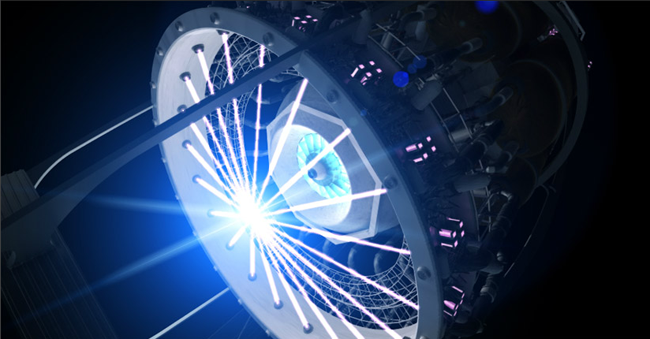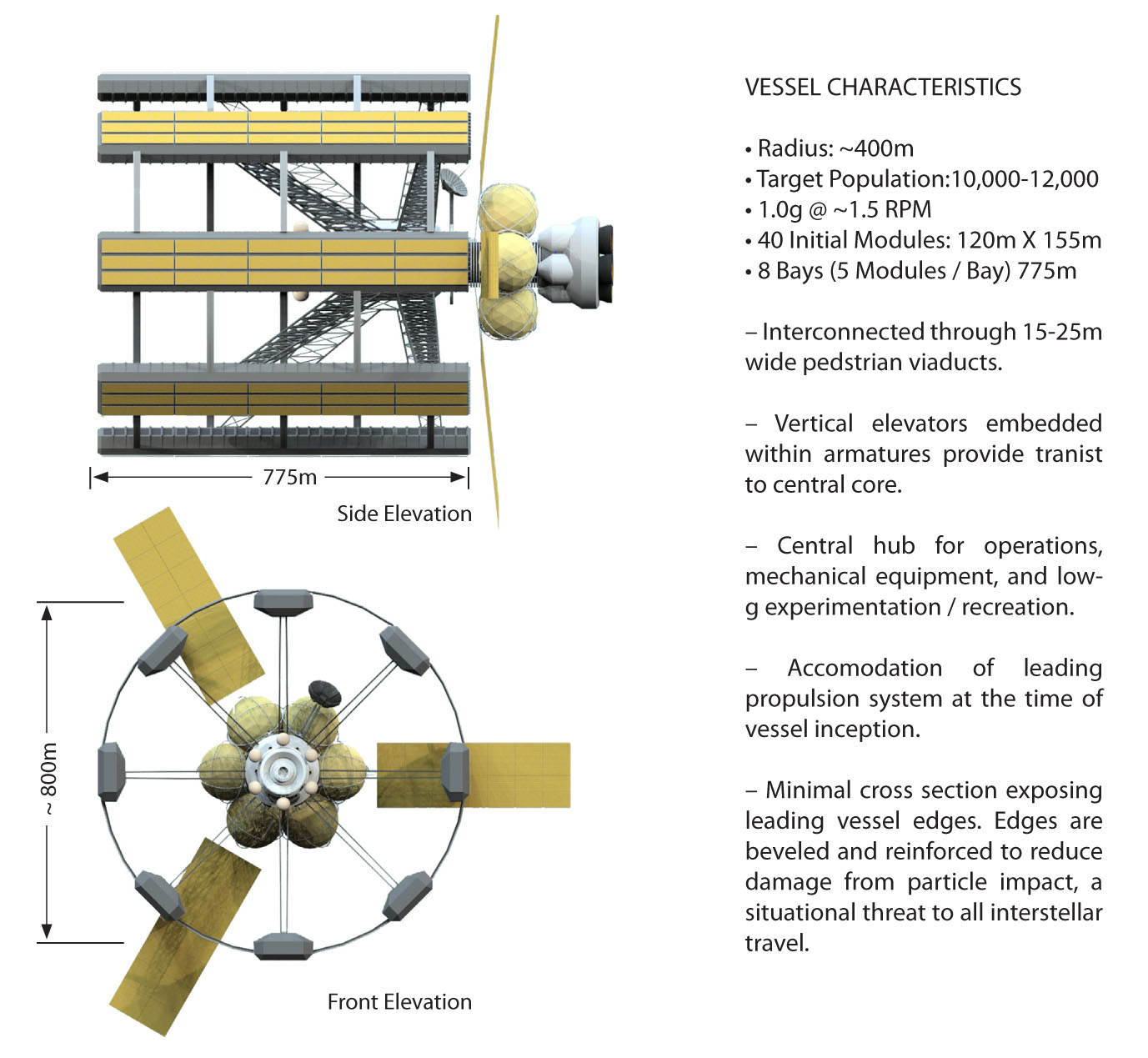
During the early 1970s, a team from the British Interplanetary Society carried out the world’s first serious engineering study of an interstellar vehicle – Project Daedalus.

Daedalus was conceived as a two-stage vehicle, which would attain a speed of 12 percent of the speed of light, for a 50-year voyage to reach Barnard’s Star.

Weighing in at 60,000 tons when fully fuelled, Daedalus would dwarf even the Saturn V rocket.

The Daedalus spacecraft’s spherical tanks contain the fuel pellets for the nuclear fusion engine.

Daedalus’ Deuterium/Helium 3 fuel pellets are injected into the engine, where they are hit by electron beams, compressing them to the point that fusion occurs. Magnetic fields contain the expanding plasma.

During Daedalus’ two years of first stage engine firing, empty fuel tanks are jettisoned to reduce weight.

Once all Daedalus’ first stage fuel is consumed, the first stage is jettisoned and the second stage continues to accelerate for another 1.8 years – the vehicle now coasts, unpowered, for the remainder of the 50-year voyage.

Daedalus’ second stage carries radio telescopes, 2 5m optical telescopes, 18 probes, two autonomous spacecraft known as Wardens, computers, power supplies and a Beryllium erosion shield.

Daedalus’ flyby of the target system would be over in a matter of hours, the data being relayed back to Earth, using the engine bell as a parabolic radio antenna.

It was envisaged that the Daedalus starship would be constructed in orbit around the Jovian moon Europa.
 ENG
ENG




 Российская Федерация
Российская Федерация 

































































